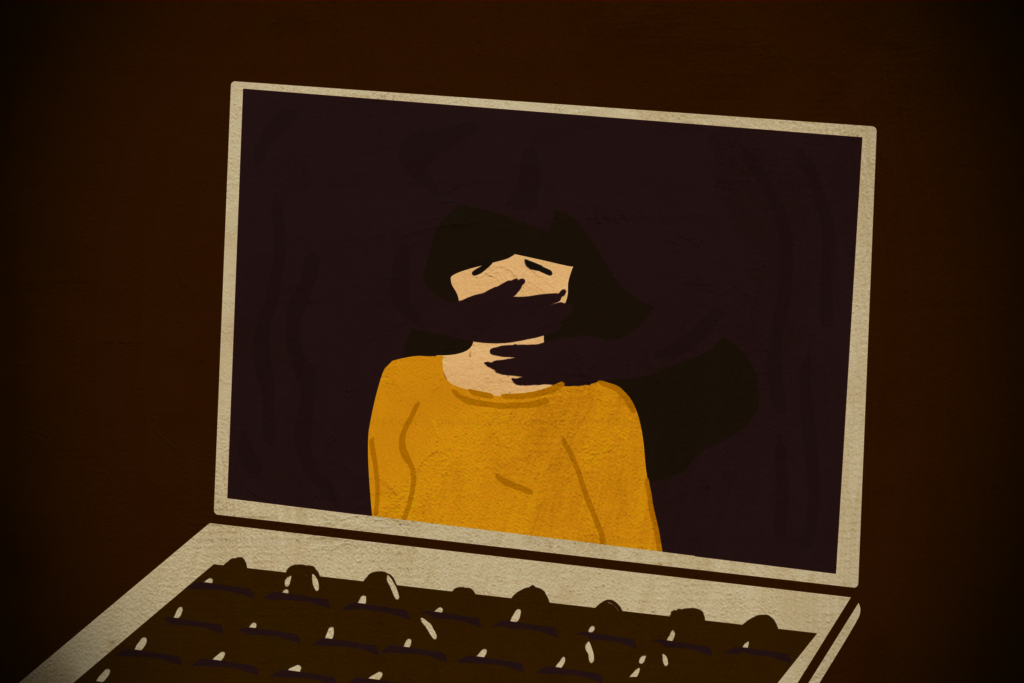Araullo’s magnum opus: GMA sheds light on crime hounding children
CHEERS TO GMA News Online for a searing special report on a criminal practice at once hidden and on the rise: the online sexual exploitation of children or OSEC. Written by Atom Araullo and designed by Jessica Bartolome for the online platform, the story is not an easy read, as it must have been difficult to produce, given the sordid crime involved. The topic is complicated, painful, and disheartening because most victims are preyed upon by their own family members. Araullo showed that difficult stories can be reported without resorting to sensationalism or violating the privacy of the victims.
What’s the Story?
Published on August 23, Araullo begins the story with an entrapment operation conducted by police and social workers that led to the arrest of an Australian man and a woman. They were accused of producing sexually explicit material of the woman’s daughters Luz, six, and Grace,10 (not their real names). Araullo then steps back to provide background about the crime, describing other cases and filling the gaps with findings from studies and information from groups working with victims who describe the long-term harm done to these children.
What the Report Got Right
Araullo moves easily from storytelling, walking readers through the police operation to shifting emphasis to data drawn from multiple sources to lay out the big picture, and back again to the entrapment. He takes care not to sensationalize the cases, presenting the facts in a straightforward manner, not playing up the victimization which he presents from the perspective of experts and other authorities.
He spends more time discussing the underlying conditions that give rise to the problem, then turning to the urgently needed efforts so these victims can recover from severe trauma.
Effective use of visuals helped to fill out what could not be exploited — the children and their lives. Images, taken by Araullo himself, projected the surroundings, the streets, the house, as the narrative spoke eloquently of the innocence of children, sustained despite the darkness that had enveloped their lives. The children rescued from shelters are shown with faces blurred, unrecognizable, as Araullo layers the story with hope that in their rescued state, their new activities, their dancing, and writing, these innocents will recover and become whole again.
Araullo connects the rise of the OSEC cases to the heightened use of Internet and social media. He recalls the arrest of a foreigner who had posted videos on the dark web in 2015, his trial and conviction for more than 60 cases of child abuse. He notes factors that made the Philippines easy to exploit for this crime — the poverty and desperation of families, the easy communication with high proficiency in English to set the terms of criminal engagement, among others.
To conclude his report, Araullo explains that rescuing children from harm is only the first step in what is surely a long road to recovery. He visits CURE Foundation, an organization that focuses on the after-care of survivors. There he talks with “Precious,” 14, who spoke about her dreams to be a lawyer so she can defend and win justice for other child victims. Her mother is now in jail and Precious is testifying against her.
Why Is This Important?
Pursuing justice can be tremendously difficult for survivors; facing, let alone testifying against, one’s own parents and relatives must be terrifying. Their courage, as clearly demonstrated in Araullo’s report, is repaid with the relentlessness and tenacity of the law enforcers and child-rights advocates who ensure that justice is done.
Araullo took a risk with this report; not necessarily the physical risks involved in the entrapment and raids that captured the suspects. Breaking the silence has its own risks. Holding up what is shameful can offend. To discuss this kind of crime calls attention to so much that is wrong with our society and our institutions, including the family. One does not do this without courage and the confidence to do what is necessary for greater protection of children. Araullo’s magnum opus should become a model for other journalists on how to report on the most vulnerable members of our society.

Leave a Reply